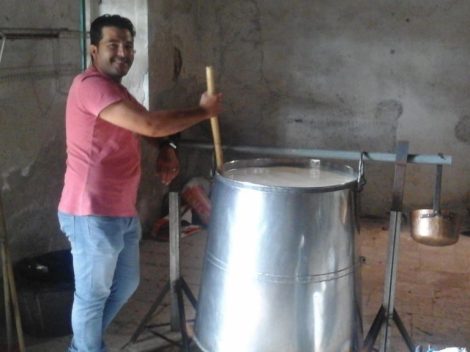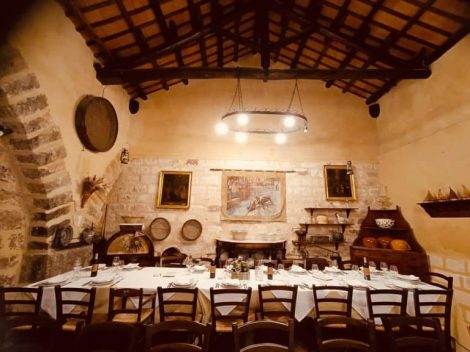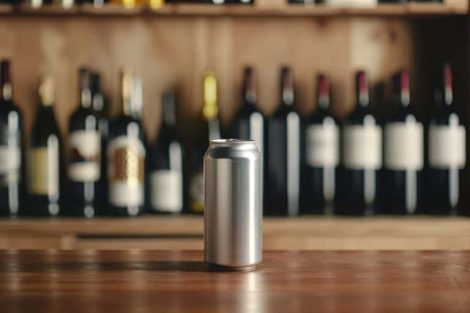On the regional terminology adopted to define cuts and sections of animals belonging to the large category of adult cattle (we will focus on this) there is really something to get lost in: it is so varied and diverse that even a butcher, having crossed a regional border, may have difficulty in communicating which cut of meat he intends to buy from the farmer. For the sake of convenience and clarity, therefore, we have tried to adopt terms that are shared and recognised nationwide. In any case, it is the intended cooking method that should guide the purchase, especially in the choice of cut. Rare, raw, half-cooked or well cooked: it all depends on the cut and the quality of the meat.
Different cuts of meat: thigh
The first sectioning that the animal undergoes after being slaughtered and skinned is into two halves, called half-carcasses, from which four quarters are obtained. Each half-carcase is made up of the thigh, back, which in turn comprises loin and rib, and shoulder. From the thigh, starting from the inside just below the hip bone, you get the rump, the sub-thigh, the muscle, the hip nut and the actual nut, which corresponds to the central globe of the thigh: 'The latter,' advises Fabrizio Nonis, better known as Bekér, 'are indicated above all for roasts, stews or braised meats, but you can also obtain good steaks, with which you can make rolls, for example.
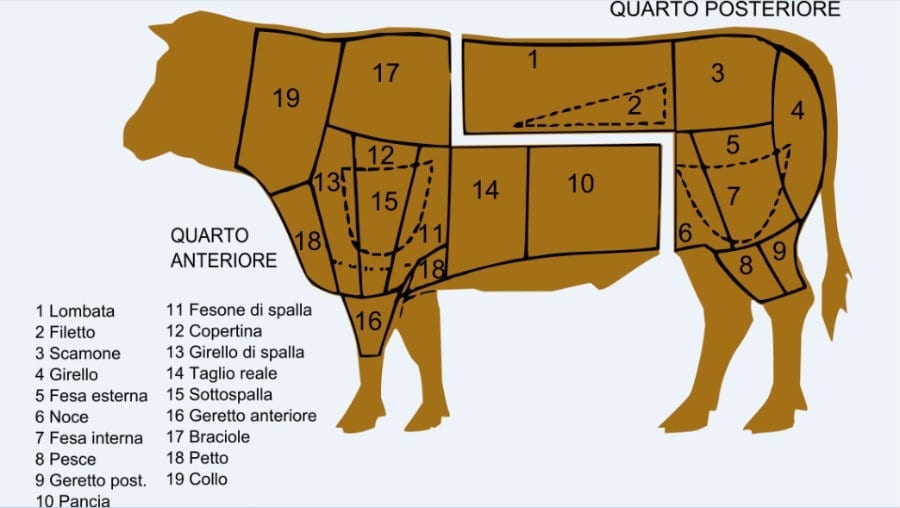
Again from the leg, the punta di culaccio (or rump) is made, the rump and the gizzard, the flank and finally the leg. 'The punta di culaccio is what remains of the rump after separation from the loin: it is very well braised. The rump and sirloin are also the cuts most commonly used for braising, but you also get very good carpaccios from them, as they are very lean and exceptionally round. In any case, these are ductile cuts, with a perfect compromise between the lean part, the slight infiltration of fat and a very tender fibre'. The leg is used to make the exquisite ossobuco; however, it is usually the veal that is used in traditional recipes, such as yellow risotto with ossobuco or ossobuco with peas. The rest of the leg meat lends itself well to the preparation of broths and jellies.
Back
It is from the back that the noblest cuts are obtained: fillet, sirloin and rump. The fillet has a pyramid shape and is divided into fillet head, a less fine part, and fillet heart. The former is generally used for tasty steaks, perhaps cooked on the barbecue; the latter, on the other hand, is particularly suitable for tender roasts. It is from the less-thick part of the fillet heart that tournedos are obtained, tasty slices usually wrapped with a strand of food-grade twine so that they retain their rounded shape even when cooked. The sirloin extends from the tip of the hip to the first ribs. 'It is that cut which, if left on the bone, gives us rib-eye steaks and T-bone steaks (a cut of sirloin that includes the fillet)'. And it is also from the sirloin that we obtain the delicious entrecôte (the term itself indicates slices of meat that must be cut between the two bones of the sirloin), delicious grilled and barbecued. Then there is rump 'which is the continuation of the fillet, the part that spreads out inside the thigh in an almost heart-shaped shape. It too is part of the noblest cuts'. To complete the back, the kidney and the neck.
The shoulder for boiled meats
The shoulder, in the case of adult cattle, has one of the lowest commercial values of all sections. The resulting cuts are mainly used for boiled meat. Once boiled, this meat is perfect for making classic boiled, breaded and fried patties. The rule to follow is this: the parts of the animal that have worked the hardest, whose muscles have developed the most, are less tender, suitable for long cooking or stewing. Cuts such as sirloin and fillet, which are under the back where the muscles are not very developed, are much more tender, also suitable for short cooking.
Offals
This includes all organs and sections that do not fit into the four quarters, the two front and two rear quarters, into which the bovine carcass is traditionally divided. These are the offal, contained in the thoracic and abdominal cavities, the head, snout, cheeks, tail, legs, brains and backs. Lungs, spleen, liver, heart, kidneys, sweetbreads and all that was discarded from the slaughter of calves and adult cattle once ended up on the tables of poor families or slaughterhouse workers. Today, the recipes that were prepared then are among the most popular.

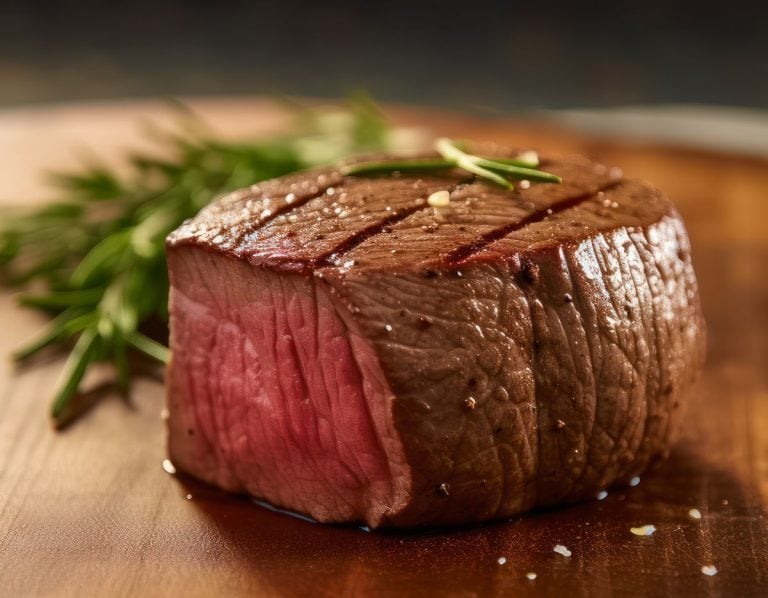
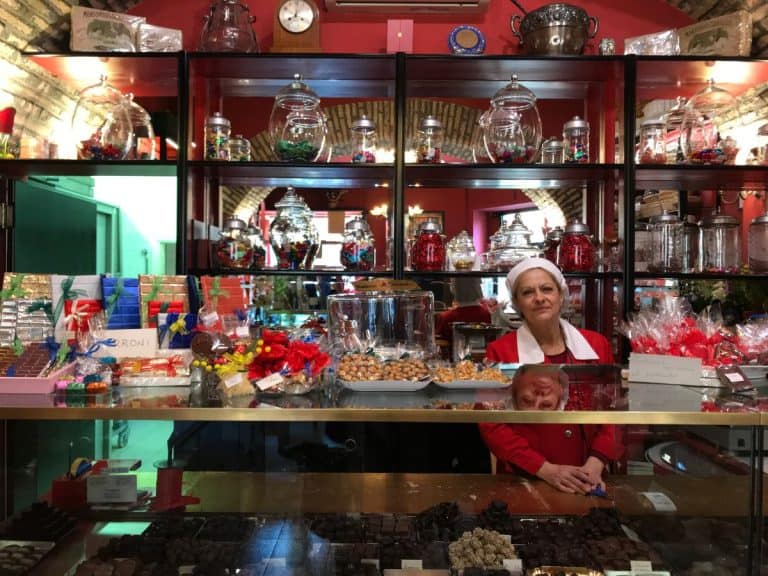 The ancient chocolate factory hidden in the alleys of Rome
The ancient chocolate factory hidden in the alleys of Rome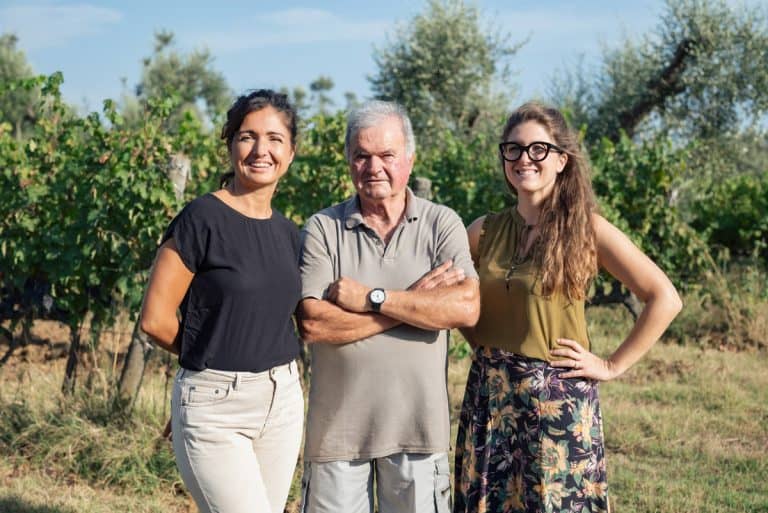 The two sisters carrying forward one of the first wineries to bet on Bolgheri
The two sisters carrying forward one of the first wineries to bet on Bolgheri Women are the best sommeliers. Here are the scientific studies
Women are the best sommeliers. Here are the scientific studies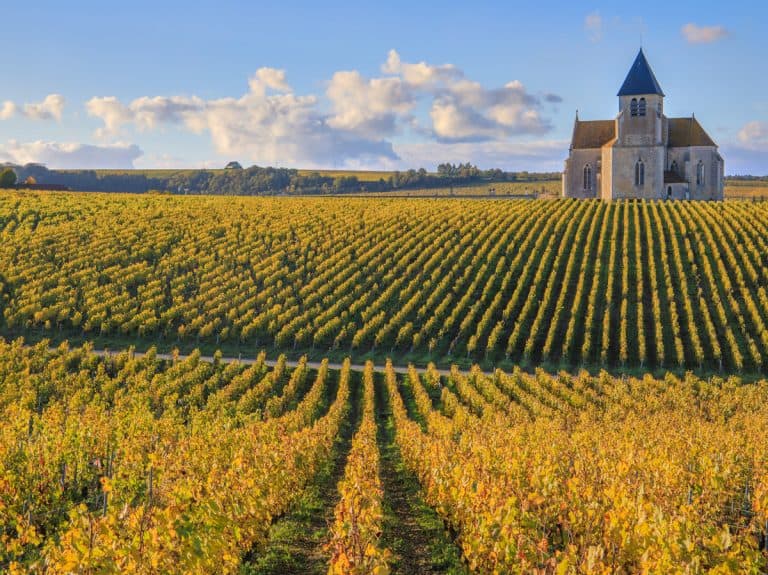 Burgundy’s resilience: growth in fine French wines despite a challenging vintage
Burgundy’s resilience: growth in fine French wines despite a challenging vintage Wine promotion, vineyard uprooting, and support for dealcoholised wines: the European Commission's historic compromise on viticulture
Wine promotion, vineyard uprooting, and support for dealcoholised wines: the European Commission's historic compromise on viticulture